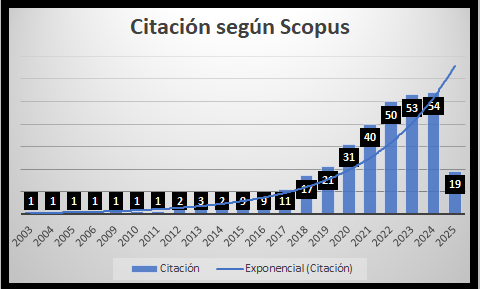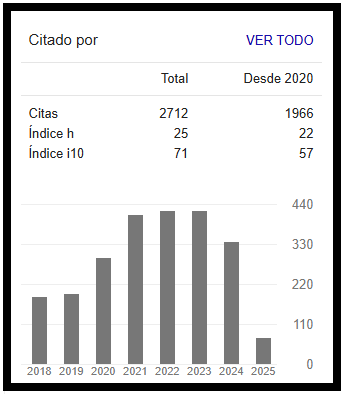The chatbot as a communicative, marketing and business success factor: empirical analysis
DOI:
https://doi.org/10.24265/cian.2024.n19.02Keywords:
chatbot, interactivity, communication, marketing, companyAbstract
This research explores the perception of customers in Spain about interactions with chatbots as customer service agents and attempts to identify the communicative and marketing factors of success in this interactivity, which is growing in the Broadband Society. To achieve the research objectives, a quantitative methodology is followed through a survey aimed at Spanish clients without distinction of origin. The results show that customers’ perception of the chatbot depends on the context. If the customer’s question or request is simple, the perception is positive; if it is a complex question, the perception is negative. Furthermore, it is observed that the main factors that affect customer perception are quality and context. It is concluded that there is a relationship between the quality of the chatbot and customer satisfaction and it has been identified that the most important factor for the consumer when interacting with a chatbot is effectiveness.
Metrics
Downloads
References
Apple Newsroom (2011). Apple Launches iPhone 4S, iOS 5 & iCloud. https://www.apple.com/newsroom/2011/10/04Apple-Launches-iPhone-4S-iOS-5-iCloud/
Araújo, T., & Casais, B. (2020). Customer Acceptance of Shopping-Assistant Chatbots. En: Rocha Á., Reis J., Peter M., Bogdanovic Z. (eds) Marketing and Smart Technologies. Smart Innovation, Systems and Technologies, 167. Springer, Singapore. https://doi.org/10.1007/978-981-15-1564-4_26
Breazeal, C. (2004). Designing sociable robots. MIT Press.
Brüggemeier, B. y Lalone, P. (2022). Perceptions and reactions to conversational privacy initiated by a conversational user interface. Comput. Speech Lang., 71, 101269. https://doi.org/10.1016/j.csl.2021.101269
Candela, E. (2019). Consumers' perception and attitude towards chatbots adoption. A focus on the Italian market. Aalborg University.
Computer Generated Solutions Inc. (2019). Chatbots and Channels. CGS.
Crosas Batista, M. y Mora Ayala, E. (2022). La era de los asistentes conversacionales. Editorial UOC.
De Cicco, R., Silva, S.C. and Alparone, F.R. (2020). Millennials' attitude toward chatbots: an experimental study in a social relationship perspective. International Journal of Retail & Distribution Management, 48(11), 1213-1233. https://doi.org/10.1108/IJRDM-12-2019-0406
DeLone, W. H., y McLean, E. R. (2003). The DeLone and McLean model of information systems success: a ten-year update. Journal of Management Information Systems, 19(4), 9-30.
DeLone, W., y McLean, E. (1992). Information Systems Success: The Quest for the Dependent Variable. Information Systems Research, 3(1), 60-95. https://doi.org/10.1287/isre.3.1.60
Eren, B.A. (2021). Determinants of customer satisfaction in chatbot use: evidence from a banking application in Turkey. International Journal of Bank Marketing, 39(2), 294-311. https://doi.org/10.1108/IJBM-02-2020-0056
Fondevila-Gascón, J.-F. (2010). El cloud journalism: un nuevo concepto de producción para el periodismo del siglo XXI. Observatorio (OBS*) Journal, 4(1), 19-35.
Fondevila-Gascón, J.-F. (2013). Periodismo ciudadano y cloud journalism: un flujo necesario en la Sociedad de la Banda Ancha. Comunicación y Hombre, 9, 25-41. https://doi.org/10.32466/eufv-cyh.2013.9.163.25-41
Fondevila-Gascón, J.-F., Lopez-Lopez, D., Puiggròs, E., Pérez-Cubero, P. (2023). On the Capture and Use of Private Conversations on Mobile Phones for Marketing Purposes: A Case in the Tourism Sector. Advances in Digital Marketing and eCommerce, 185-215.
Gansser, O. A., & Reich, C. S. (2021). A new acceptance model for artificial intelligence with extensions to UTAUT2: An empirical study in three segments of application. Technology in Society, 65, 1-15. https://doi.org/10.1016/j.techsoc.2021.101535
Haptik (2022). Conversational AI in Fintech Annual Report 2021. Haptik.
Hjerpbakk, A., Hopland, A. M., Høyland, S. E., Kirknes, A., & Nylund, M. E. (2021). Perception of chatbots in customer service. NTNU.
IBM (2020). Natural Language Processing. IBM.
IBM (2022). Deep Blue. IBM.
Jain, M., Kumar, P., Kota, R. y Patel, S. (2018). Evaluating and Informing the Design of Chatbots. Proceedings of the 2018 Designing Interactive Systems Conference, 895-906. https://doi.org/10.1145/3196709.3196735
Jenneboer, L., Herrando, C. y Constantinides, E. (2022). The Impact of Chatbots on Customer Loyalty: A Systematic Literature Review. Journal of Theoretical and Applied Electronic Commerce Research, 17(1), 212-229. https://doi.org/10.3390/jtaer17010011
Jimenez Flores, V. J., Jimenez Flores, O. J., Jimenez Flores, J. C., Jimenez Castilla, J. U. (2019). Entidad conversacional de inteligencia artificial y calidad del servicio percibido por estudiantes de la Universidad José Carlos Mariátegui Filial Tacna. Revista Ciencia y Tecnología para el Desarrollo, 5(9), 19-26. https://revistas.ujcm.edu.pe/index.php/rctd/article/view/138
Juniper Research (2017). Chatbot Conversations to deliver $8 billion in Cost savings by 2022. Juniper Research.
Kasilingam, D. L. (2020). Understanding the attitude and intention to use smartphone chatbots for shopping. Technology in Society, 62. https://doi.org/10.1016/j.techsoc.2020.101280
King, D. (1997). Kasparov v Deeper Blue. Batsford.
Kristensen, K., Martensen, A., y Gronholdt, L. (1999). Measuring the impact of buying behaviour on customer satisfaction. Total Quality Management, 10(4-5), 602-614. https://doi.org/ 10.1080/0954412997587
Kvale, K., Freddi, E., Hodnebrog, S., Sell, O. A., y Følstad, A. (2020). Understanding the user experience of customer service chatbots: what can we learn from customer satisfaction surveys? International Workshop on Chatbot Research and Design (pp. 205-218). Springer.
Lally, A. y Fodor, P. (2011). Natural language processing with prolog in the IBM Watson system. The Association for Logic Programming (ALP) Newsletter, 9. 1-4.
Lester, J., Branting, K. y Mott, B. (2004). Conversational agents. The Practical Handbook of Internet Computing, 220-240.
Live Person (2022). How consumers view bots in customer care. Live Person.
McGuire, B. (2006). The Turing Test. En University of Washington, The History of Artificial Intelligence (pp. 5-9). University of Washington.
McKinney, V., Yoon, K., y Zahedi, F. M. (2002). The measurement of web-customer satisfaction: An expectation and disconfirmation approach. Information Systems Research, 13(3), 296-315.
Melián-González, S., Gutiérrez-Taño, D. & Bulchand-Gidumal, J. (2021). Predicting the intentions to use chatbots for travel and tourism. Current Issues in Tourism, 24(2), 192-210, https://doi.org/10.1080/13683500.2019.1706457
Nicolescu, L., & Tudorache, M. T. (2022). Human-Computer Interaction in Customer Service: The Experience with AI Chatbots: A Systematic Literature Review. Electronics, 11(10), 1579. http://dx.doi.org/10.3390/electronics11101579
Oliver, R. L. (2010). Customer satisfaction. Wiley international encyclopedia of marketing.
Rouhiainen, L. (2019). Inteligencia artificial. Alienta Editorial.
Segoro, W. y Limakrisna, N. (2020). Model of customer satisfaction and loyality. Utopía y Praxis Latinoamericana, 25(1), 166-175.
Shah, H. (2011). Turing's misunderstood imitation game and IBM's Watson success. In Keynote in 2nd Towards a Comprehensive Intelligence test (TCIT) symposium. AISB.
Shammut, M. (2020). Driverless Cars: A Historical Overview. Massey University.
Turing, A. (1950). Computing machinery and intelligence. Mind, LIX (236), 433-460.
Tse, D. K., y Wilton, P. C. (1988). Models of Consumer Satisfaction Formation: An Extension. Journal of Marketing Research, 25(2), 204-212. https://doi.org/10.1177/002224378802500209
Yüksel, A., & Yüksel, F. (2001). The expectancy-disconfirmation paradigm: a critique. Journal of Hospitality & Tourism Research, 25(2), 107-131.
Downloads
Published
Issue
Section
Categories
License
Copyright (c) 2024 Joan-Francesc Fondevila-Gascón, Abigail Huamanchumo, Ramon Martín-Guart, Óscar Gutiérrez-Aragón

This work is licensed under a Creative Commons Attribution 4.0 International License.
In case the manuscript is approved, the authors retain the copyright and assign to the journal the right to publish, edit, reproduce, distribute, display and communicate in the country of origin and abroad by means of print and electronic media in different databases.
In order for this procedure to be recorded, the author must fill out the following formats:
Format 1 - Author data Format.
Format 2 - Affidavit on originality and authorization for the publication of articles Format.
Format 3 - Open Science Compliance.








2.png)


















